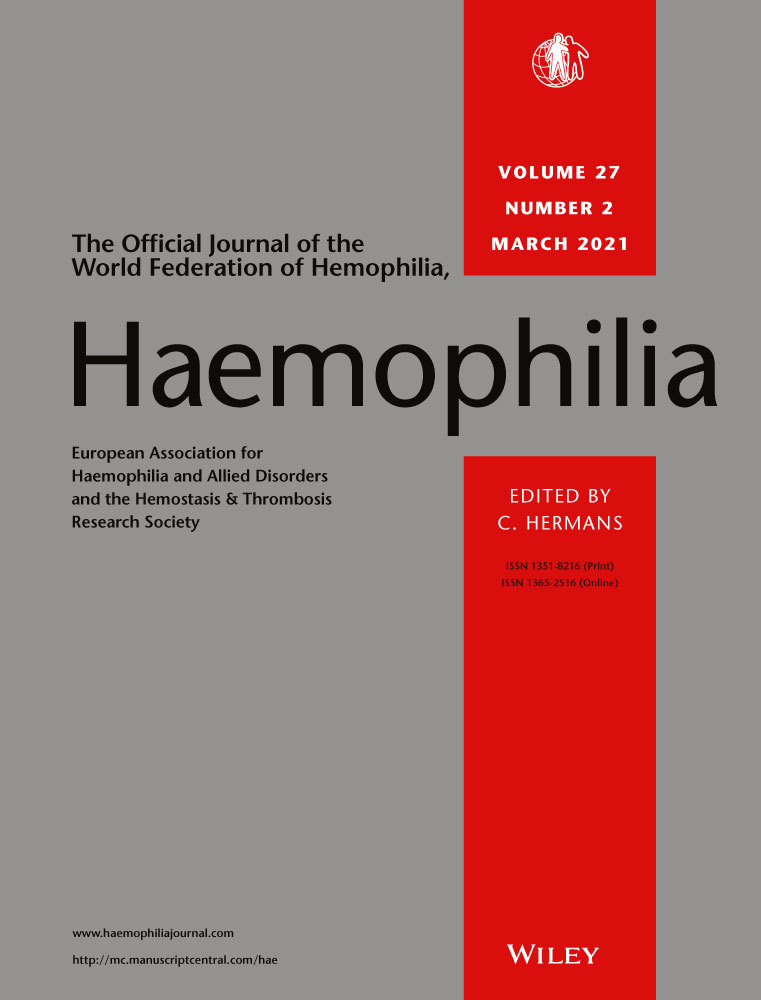The effects of manual therapy on musculoskeletal system, functional level, joint health and kinesiophobia in young adults with severe haemophilia: A randomized pilot study
Abstract
Introduction
The effects of manual therapy (MT) on joint health and functional level in haemophilic arthropathy (HA) have relatively under-explored.
Aim
To investigate the effects of MT in HA of lower limb joints on musculoskeletal system, functional level, Functional Independence Score in Hemophilia (FISH), Hemophilia Joint Health Score (HJHS) and kinesiophobia.
Methods
Seventeen patients were randomized to the control group (CG = 9) and manual therapy group (MTG = 8). The number of haemarthrosis (NoH) was recorded from the diaries. Range of motion (ROM), strength and pain intensity were measured using goniometer, digital dynamometer and visual analogue scale, respectively. Joint health was evaluated with HJHS, functional independence with FISH, and kinesiophobia with Tampa Scale. Functional Reach (FR), Timed Up-Go (TUG) and 5-Times Sit-to-Stand (5*STS) tests were used to evaluate functional level. Home exercises were given to both groups. Additionally, myofascial release techniques and mobilizations were applied to MTG. Interventions were applied 3 d/weekly for 5 weeks. Assessments were performed at baseline and after treatment.
Results
ROM, strength, activity pain, HJHS and FISH were improved in MTG (p˂0.05). Ankle NoH, 5*STS and FR were developed in both groups (p˂0.05), but kinesiophobia, TUG and knee NoH were not significant. Although improvements were observed in favour of MTG in HJHS, FR, activity pain and ankle strength/ROM (p˂0.05), no significant difference was found in FISH, kinesiophobia, TUG, 5*STS, resting pain and knee strength.
Conclusion
Reduction in ankle NoH indicated that both interventions were safe. The use of MT in HA of lower limb joints was an effective physiotherapy approach to improve functional level, joint health and functional independence.
CONFLICT OF INTEREST
The authors stated that they had no interests, which might be perceived as posing a conflict or bias.




